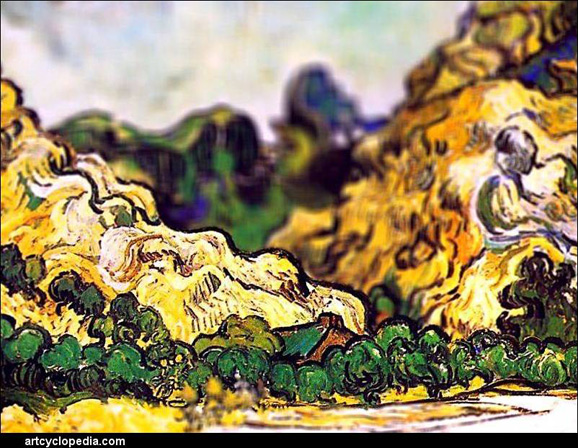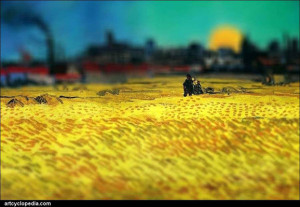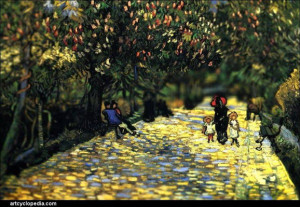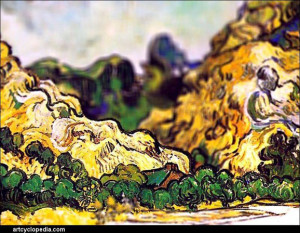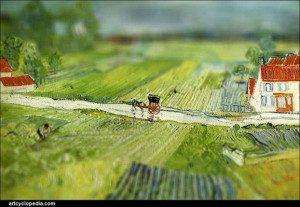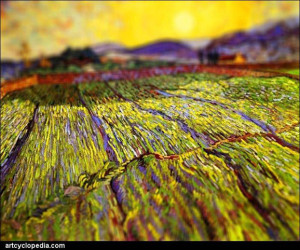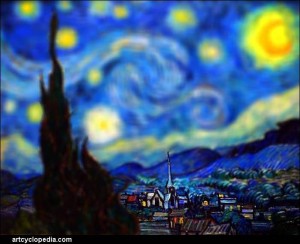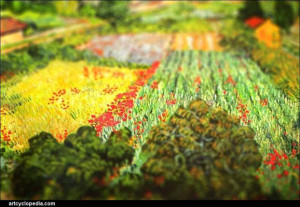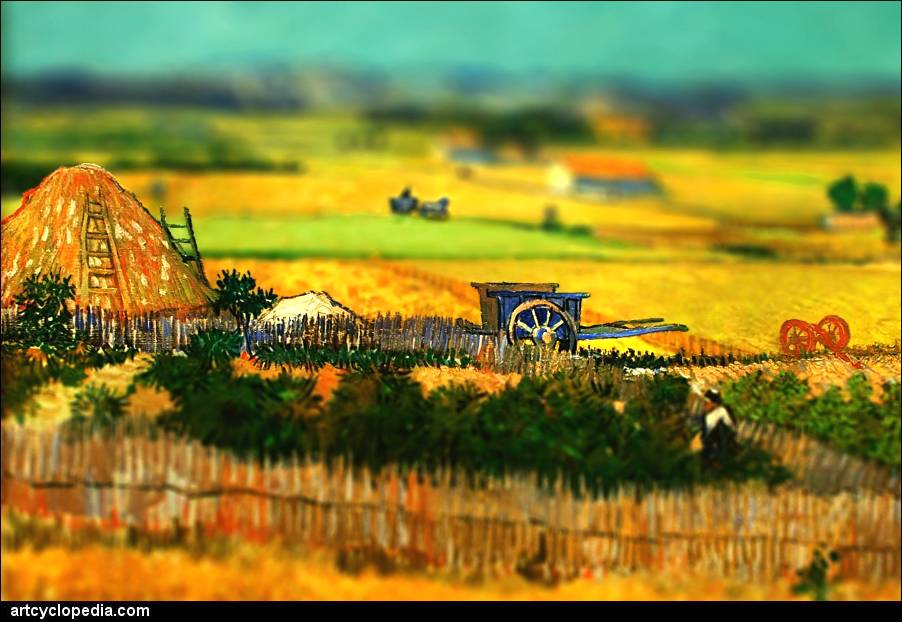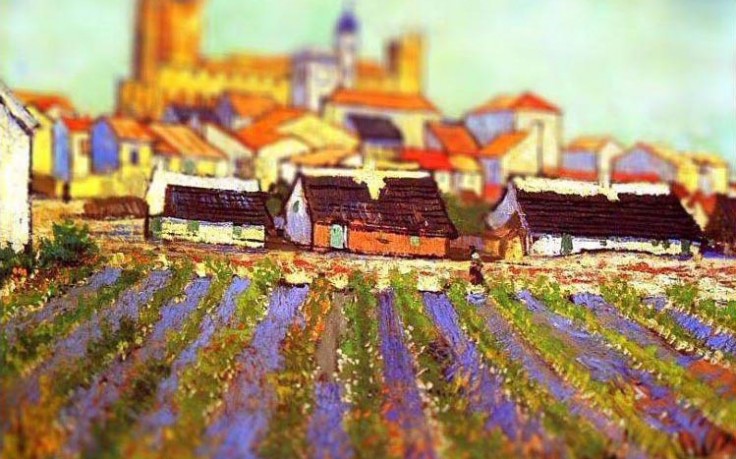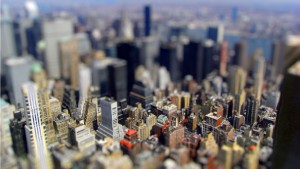What is tilt-shift and how is it used? Some examples — these amazing Van Gough scenes — of tilt shift will give a good context. But there’s more than one way to create the effect of these images, as you’ll later find out in this article. However, you probably want to learn how to do it with a camera, so we’ll start there.
What is tilt shift?
Tilt-shift is what happens when you use a “tilt-shift lens on your camera. As you can see, it’s tilted.
The above image is what photographers usually use. You can actually make your own, though, and this photo gives an even better idea what the lens is doing. The one on the left is a store-bought Nikon tilt-shift lens. The second one is a kind of home-made version made by Dutch photographer Henk van Mierlo, and it uses an Ebay-purchased Nikon Bellows PB-4, a camera often discarded. (Van Mierlo used a 135mm lens on it rather than the regular 50mm because the 135mm lens allows you to focus at infinity, but it also needs an enlargement, which van Mierlo also kind-of home-made by drilling a hole in a body cap and adding some silver tape to make if fit tightly![]() )
)
The shifter (really just an angle-piece for the base of a lens) can also be made any other way. Some people 3D Print them, but you could even just seal light out with black tape and hold your lens on an angle.
What does a tilt-shift lens do, then? It allows the photographer to shift focus from the person in front to the person in the very back of vice-versa.
SO, that means you can keep your focus on the guy in the back while other things happen in the front.
Here’s three images. The first one is what you normally see in your camera — it’s focused on the person, leaving the background out of focus. (Images by The Slanted Lens)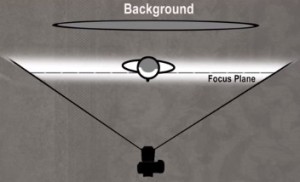 In the image below, the lens is swung to the right. Look at the focus plane. You can expect anything along that line to be in focus — a normal lens can’t do this. The background and the person (one of his shoulders) are both in focus on the left side of the frame, so it looks like the foreground is out of focus while the middle and background are in focus.
In the image below, the lens is swung to the right. Look at the focus plane. You can expect anything along that line to be in focus — a normal lens can’t do this. The background and the person (one of his shoulders) are both in focus on the left side of the frame, so it looks like the foreground is out of focus while the middle and background are in focus.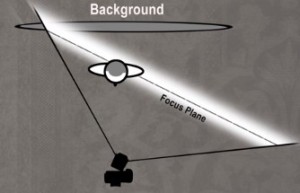
And in this image below, the person is in focus, but one of his shoulders is out of focus, and so is the background, in part of the frame. So everything is out of focus except the persons face and one shoulder — kind of a vertical line of in-focus surrounded by a blur.
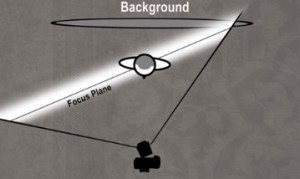 So that’s what the lens is and does. But really that’s not very impressive, because you can pretty much modify your focus anyway — with your camera and later with blur on your computer. So what’s the secret to the strange toy-like images of van Gogh or cityscapes like this one by Neil Roberson (New York)?
So that’s what the lens is and does. But really that’s not very impressive, because you can pretty much modify your focus anyway — with your camera and later with blur on your computer. So what’s the secret to the strange toy-like images of van Gogh or cityscapes like this one by Neil Roberson (New York)?
What’s the secret?
When you see these amazing images, you may notice that part of the effect is dramatically shallower depth-of-field. The lens is working like lenses do when we’re dealing with super-macro photography (macro lens for up-close shots). So we think we might be seeing something tiny.
You’re also seeing a high-angle shot. This is a shift on your lens — i.e. the camera points at an lens that is angled to the side. You’re not seeing a tilt — which is when the lens is raised up higher or lower against the camera, which creates a distorted-image effect.
NOTE: You can also use the shift to keep focus on the entire length of a small object in macro photographer. For example, if you’re shooting a ruler on a table, you can maintain focus on the entire length of the ruler with a shifted lens, which, as you remember from the three grey images above, means that the focus plane can be moved any way you like it.
How to create a tilt-shift effect without a lens… on your computer
You can adjust a photo’s contrast, color saturation, and depth of focus. This is actually the technique used to make the van Gogh images above. Note that in these images, created by Artcyclopedia, nothing was added to the paintings. The creator of the images above just manipulated the light and adjusted which areas of the frame were in focus.
Is this article worth sharing with other photographers and van Gogh enthusiasts?
By Andy Stern
